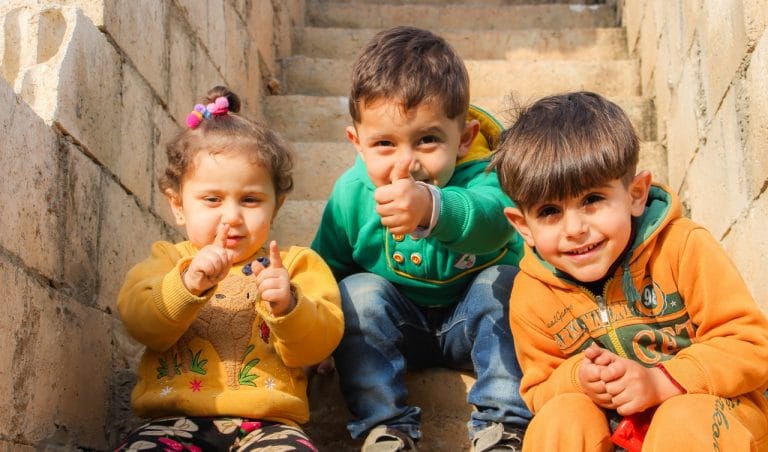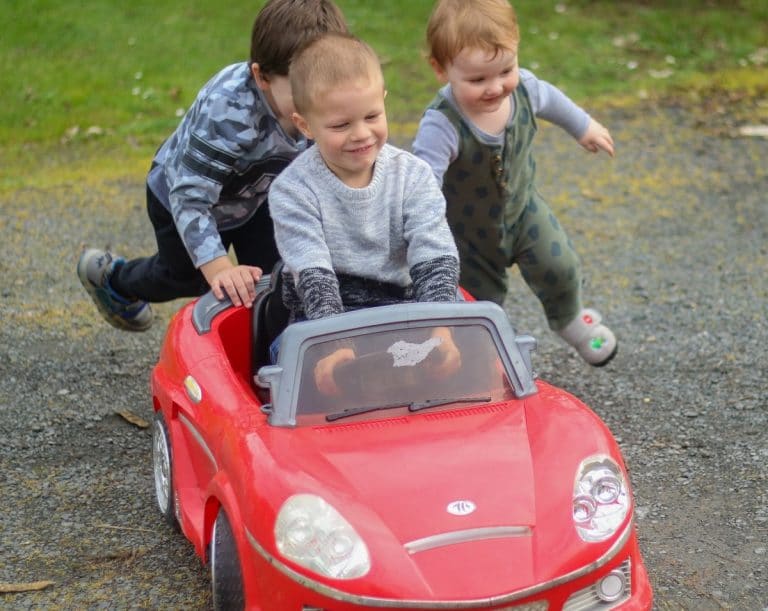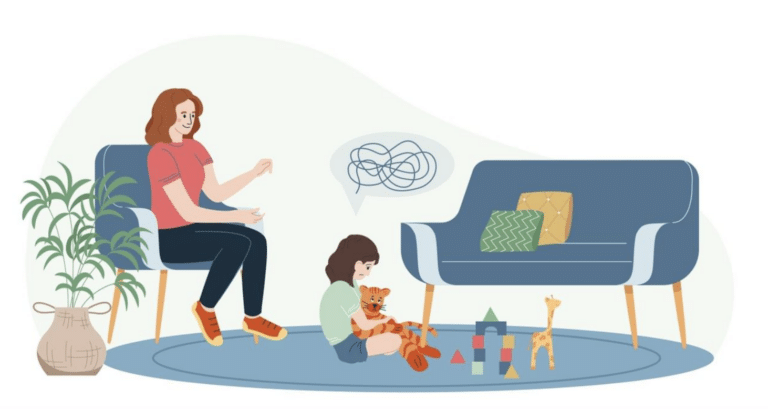Dark circles under your eyes? Cranky? Reached the end of your tether? Sleepless nights are not uncommon for new parents and can become a serious source of stress, anxiety and even relationship challenges. If this sounds familiar, don’t worry, don’t catastrophize – almost all parents experience it and you too can make it through. I’d like to share with you the secret weapon my partner and I implemented which had our baby sleeping 8-12 hours solid, every night since they were 6 months of age. Our secret weapon? Bedtime routines for toddlers and babies.
In This Article
- Do Bedtime Routines Really Help Your Child Sleep Through the Night?
- So What Exactly is a Bedtime Routine?
- Bedtime Routines for Toddlers and Babies – The Reality Check
- Why is Consistency So Important to Bedtime Routines?
- So What Do Best-Practice Bedtime Routines for Toddlers and Babies Look Like?
- Now it’s Your Turn!
Do Bedtime Routines Really Help Your Child Sleep Through the Night?
The success of this approach is not unique to us. Many other parents swear by bedtime routines and ‘baby whisperers’ often employ routine as a core tenet in their methodologies. In fact, there’s an abundance of scientific evidence in support of bedtime routines for toddlers and babies. Studies have shown bedtime routines help with falling asleep faster, longer sleep times, fewer awakenings, and decreased reports of sleep-related problems from caregivers.
But wait, there’s more! The benefits of bedtime routines go beyond sleep. Experts have demonstrated that ‘sleep hygiene’, as it’s occasionally referred to, has a positive relationship with a child’s behavioural / emotional regulation and mood. Sleep routines have even shown links to improved nutrition, hygiene, literacy, numeracy and other developmental outcomes! Another major benefit is that you, the parents, are also likely to see improved mood, resilience and happiness. What more could you ask for?
So What Exactly is a Bedtime Routine?
Routine is defined as “a sequence of actions regularly followed”. Therefore a bedtime routine is a series of actions that are regularly followed around your child’s bedtime to help them sleep. The intent is to wind down your child after the excitement of the day, with each action in the routine providing a subconscious cue to your child that sleepy-time is getting nearer.

The routine you practice can be something unique and special. If you want to see 8+ hour long sleeps from your child you’ll need to employ some specific success factors, which we’ll cover later, but you can still easily make it your own. To get the creative juices flowing, think about:
- Reading stories before bed
- Playing low-energy games as bedtime approaches
- Singing the same lullaby each night
- Spending time cuddling
- Having a special way you tuck your child in
- Brushing their hair
- A few minutes with some simple non-electronic toys
- Acting out an imaginative bedtime story
So long as it isn’t overly stimulating, it can be whatever you and your child enjoy doing together. The key is absolute consistency in timing and sequence.
Bedtime Routines for Toddlers and Babies – The Reality Check
Personally, I think routine is not a strong enough word; rather than be ‘regularly followed’, the specific sequence of actions must be applied with military-like discipline. Particularly early on, you need to strictly adhere to your chosen routine without fail (save for the obvious circumstances where health or safety are at risk). This is where many parents go wrong.
It’s critical to understand the importance of strict adherence from the outset and really dwell on what that means. It’s very likely you’ll have to make sacrifices. You might not be able to have dinner with friends for a while, have to defer a holiday you were planning, or forgo opportunities at work to ensure the routine can be met. Even if your plan is near-perfect, if you don’t stick to it you’re not going to see the results you want.
Both parents need to be fully committed and working as a team to see your child sleep through the night. That extends to anyone who may be putting your child to bed; grandparents, friends, family members or older siblings helping with the routine. Separated families might experience issues but it may also present some common ground. After all, who doesn’t enjoy a good night’s sleep! Whatever the case or particular family dynamic, you’ll need to work together. The more times in a row you’re able to consistently apply the routine, the quicker you will see results.
Why is Consistency So Important to Bedtime Routines?
Repetition and regularity are important because bedtime routines leverage the principle of ’classical conditioning‘. You may have heard of Pavlov’s dogs. Pavlov was a Russian physiologist who devised a revolutionary experiment to make his dogs salivate involuntarily by the sound of his metronome. He achieved this by ‘conditioning’ the dogs to associate the sound with the arrival of food, having played the metronome consistently and repeatedly each time before they were fed for several days. After the dogs were conditioned, they would continue to salivate at the sound of the metronome even when food never came.
I know what you’re thinking – I just want to get a decent night’s sleep, why am I reading about salivating dogs!? Don’t worry, I have a point. By implementing a strict bedtime routine, you will be taking advantage of your child’s natural physiology to trigger the involuntary response of feeling tired and wanting to go to sleep! Obviously, your child must be tired in the first place and it won’t be effective if they woke up half an hour ago, but by working with your child’s instinctual and involuntary bodily responses, you can condition them to enter a more restful and enduring state of sleep.
Clearly there’s a lot of more to it than what I’ve described but this is at the heart of why so many parents swear by bedtime routines. What’s even more amazing is that these routines can be applied to a child of any age because, as highlighted by Pavlov’s dogs, language is not required. This means that babies who are yet to learn verbal communication still respond very well to bedtime routines. As I mentioned, we had our little boy sleeping solidly through almost every night at 6 months old! Amazingly, it even works on adults and similar practices are employed in the treatment of insomnia.

So What Do Best-Practice Bedtime Routines for Toddlers and Babies Look Like?
As mentioned before, your bedtime routine with your child can be tailored to the things you love to do together. However, research has shown that there are some critical elements that should be included. The secret six must-haves in a best-practice bedtime routine for toddlers and babies are:
Primary focus
- Bedtime at the same time every night
Preferably within an hour before bedtime
- Avoiding electronic devices or television before bed
- Avoiding food or drink before bed (this practice still works if you are ’dream feeding’)
Preferably within half an hour before bedtime
- Calming activities before bed, such as bathing, talking, singing, cuddling, massage or quiet play
- Reading a book before bed
- Brushing teeth before bed
Pretty simple right? But remember, you must genuinely commit to this every night and do your absolute best to apply your personal system with diligence and consistency. If you can stick to the plan, you should begin to see results after a week or two. After three weeks of consistent application, improvements should be obvious.
In my personal experience, there’s a 7th secret: pure darkness. It’s harder than you think, as I mean pure darkness. I found that even the tiniest amount of light could be enough to disrupt my boy’s sleep. The little light on your baby monitor, light creeping in under the door jamb or the dull glow from an air-conditioning control panel – all need to be covered up. Blackout curtains are an absolute must, noting there are plenty of very effective stick-on solutions to cover windows if the investment in actual curtains strains the budget. You may need to apply a bit of tape to ensure the light isn’t coming through the edges.
A last bonus tip revolves around temperature. Given the focus on consistency, we also found that trying to maintain a stable temperature helped. We targeted around 21-25°C, managed through a combination of an oil heater, air-conditioning and blankets. We kept a thermometer in the room and usually tried to manage the room’s temperature first rather than change blankets, as blanket weight can be another factor that affects sleep, particularly in younger babies.

It’s also worth pointing out that, over time, you may need to change things up. A bath might change to a shower. You may need to introduce teeth brushing or change the games you play. When shifting from a cot to a big-boy bed (as we like to call it) you may need to change some of the routine. You may even decide to move your child’s bedtime later into the evening as they grow older. With any changes, just take it slowly and make sure you involve your child, partner and anyone else who may need to know.
For my partner and I, our process revolved around the “7 o’clock train”. Our boy had to be down to bed by 7pm. We weren’t too finicky, plus or minus 5-10 minutes was fine, but try to be reasonably precise. Prior to this, we would make sure that he’d finished his feed by 6:15pm at the latest and that all electronic devices in the house, including the TV, were switched off from that point until bedtime. After dinner we had bath time, which still involved bath toys and some fun but nothing too energetic. After getting changed into bed clothes and a fresh nappy there’d be some cuddling from each of us, followed by a couple of books to fill the gap to 7 o’clock. The usual swaddling and blankets routine would follow before we put the white noise machine on very low volume and managed the room’s temperature. A last cuddle and kiss and we were out, closing the door behind us.
It may all seem a bit excessive, but it’s honestly very simple. We were able to complete the whole ritual in about 40 minutes each night and set it all up on a tight budget with little effort. The biggest challenge we had was trying to ensure we could be home every night, together, to go through the motions. On any given day, work, friends or family could potentially get in the way but we made sure to prioritise this practice and as a result, it worked wonderfully. We had to make a few changes and even miss out on a few things here-and-there, but it was well worth it.
Just before I wrap up, it’s worth mentioning that teething can also be a source of poor sleep outcomes. If you suspect this is the case, check out these tips.
Now it’s Your Turn!
I’m confident that once you master bedtime routines, they will become an incredibly useful part of your parenting toolbox and one that you can even employ up to their teenage years (where you lose all control, so good luck with that!). Any investment you make today will pay serious dividends over the coming years. Some people might think you’re a bit crazy but trust me, your sleep and your child’s sleep will improve immensely and you will see broader benefits in life.
You now have the tools and knowledge to do this, too. Like anything, it will take you some practice and some effort but it’s not complicated and there are many resources available to help you, including this website. So sit down with your partner, your family and even your friends and try to work out the routine that works for you. If your child has already begun to develop verbal communication skills, then it’s a great idea to get them involved, too. This may even become an area that you can bond over and help to build a stronger and more loving relationship. So go on; get out there and try it, and you can thank me once you’ve had a great night’s sleep!
Author Bio – James Clarke
Hello Mom News Daily Readers! Through my four years as the father of a wonderful little boy named Fox, I have come to love writing about baby, toddler and parenting topics just like this one, sharing my experiences as a loving dad, caring partner and rookie parent, in the hope that others might learn from my mistakes! I am also the proud owner and developer of newbabytoys.com, a gorgeous little site that houses my blog and saves you the trouble of finding high-quality, well-designed, safe and developmentally appropriate toys for your children.










![Home Renovation Guide [2025]](/app/uploads/2021/04/design-hacks-1-378x300.jpg)
